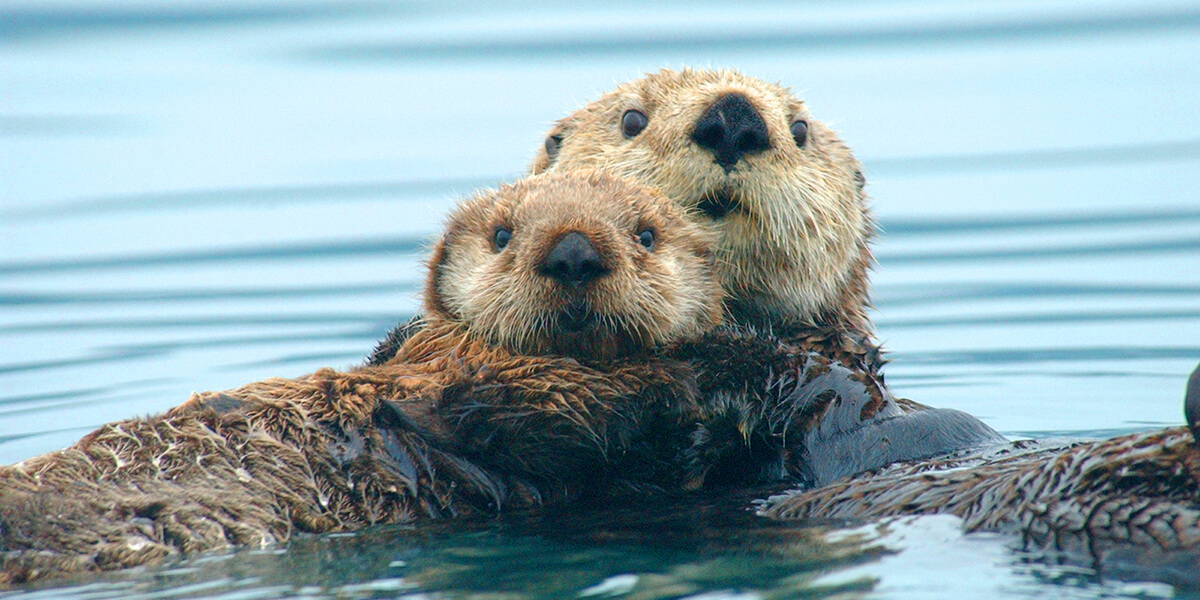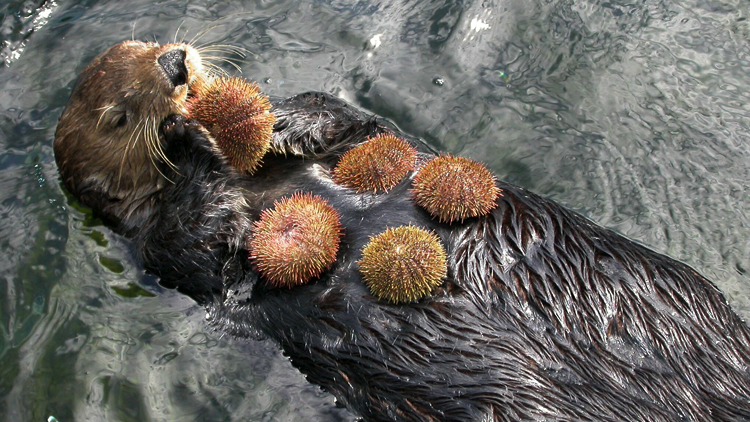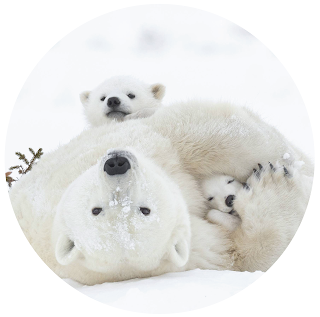Northern Sea Otters - Christine Okimura
 |
| https://www.mmc.gov/wp-content/uploads/Sea-otter2004 -by-Ryan-Wolt-MA-043219-21.jpg |
Northern Sea Otters
Enhydra lutris Kenyoni
1. Description and Ecology
Sea Otters are part of the weasel family and their fur is made of dense underfur and long guard hairs. Their underfur ranges from black to brown while their long guard hair range from black, brown and silver. Sea otters possess webbed feet to help them swim and rely on their fur to keep them warm rather than blubber. These creatures are keystone species and environmental engineers as they maintain kelp forests by decreasing the sea urchin population.
“How You Can Help Sea Otters.” Defenders of Wildlife, Defenders of Wildlife, 3 Oct. 2017, www.defenders.org/sea-otter/how-you-can-help.“Northern Sea Otter.” Alaska Species Explorer, Alaska Sealife Center, www.alaskasealife.org/alaska_species/8.Service, U.S. Fish and Wildlife. “Northern Sea Otter (Enhydra Lutris Kenyoni).” ECOS Environmental Conservation Online System Conserving the Nature of America, U.S. Fish & Wildlife Service, ecos.fws.gov/ecp0/profile/speciesProfile?spcode=A0HK.
 |
 |
http://science.jrank.org/kids/article_
images/chains_p33.jpg
|
These sea otters are located in shallow waters and off the coast of Aleutian Islands, Southern Alaska, British Columbia, and Washington. They average to about 5 feet for both male and female sea otters. The average weight for male sea otters are between 80 to 100 pounds and females weight average between 50-70 pounds. These sea otters prey on sea urchins, crabs, clams, mussels, octopus, fish and other small invertebrates. Sea otter's teeth are perfect for crushing shells such as mussels and sea urchins.
Sea otters are territorial mammals and will defend an area where female sea otters are present. Female sea otters give birth to a single sea otter at a time mainly in Spring but can give birth throughout the year. These mammals are social only within their own group.
2. Geographic and Population Changes
Sea otters were a single population that migrated across the North Pacific Rim from Japan to Mexico. Around 1740, Russian explorers arrived in Alaska and commercially exploited sea otters for their fur for about 150 years. The single population of sea otters became multiple sub species. There are Southern and Northern Sea Otters that are a subspecies to the entire species of sea otters.
 |
| http://www.adventures-in-education.com/math/SeaOtterWhereOnced%20Lived.htm |
3. Listing Date and Type of Listing
Type of Listing: Threatened
Date: August 9, 2005
4. Cause of Listing and Main Threats to Sea Otters continued Existence
The main threat to Sea Otters involve oil spills and are often caught in fishing nets as bycatch. Extreme weather changes like hurricanes and climate change affect behavior, food availability, and sea otter are more likely to lose their pups. Northern Sea Otters are struck with disease like Strep and phocine distemper. Invasive species and ocean acidification impact these marine mammals. Sea otters are preyed on by Killer Whales, Great White Sharks, Bald Eagles, Coyotes, and Brown Bears.
Sea otters are listed as threatened because Killer Whales prey on sea otters.
5. Description of Recovery Plan
1. Have self-sustaining populations of Northern Sea Otters in multiple locations where they reside.
2. Possess enough marine mammals to effectively and properly play a role in their environment.
3. Reduce predators and threats to ensure sea otter survival.
6. What Can You Do?
You can adopt a sea otter here to help educate people and provide funds to Defenders of Wildlife. All funds go to preserving and saving sea otters.
You can also just keep yourself educated or use less plastics and pollutants.
Write letters to politicians to protect marine wildlife especially sea otters.
7. Other Sources
Works Cited:
| Doroff, A. & Burdin, A. 2015. Enhydra lutris. The IUCN Red List of Threatened Species 2015: m e.T7750A21939518. http://dx.doi.org/10.2305/IUCN.UK.2015- 2.RLTS.T7750A21939518.en. Downloaded on 09 November 2017. |




It is interesting that Sea Otters are threatened as keystone species. They span such large part of the ocean and it just shows how much human activity is polluting and affecting the ocean and sea life. I love that we can adopt an otter in order to donate to improving this cause. I feel like a big part of the recovery plan has to do with improving climate change, therefore it is probably a constantly changing plan.
ReplyDeleteMaya Mashiach
BIO227
Really like your chart that explains how they are a keystone species makes it easy to see how everything works together and the importance of protecting sea otters.
ReplyDelete~Sage Massey
Description and Ecology section covered a lot of information in a simple, easy-to-read way. Smart to attach links, like to Adopt a Sea Otter, in the What You Can Do section so it is easy for readers to help. Super cute animal!
ReplyDelete-Perry Nalle
Before learning about this species (in class and from your blog) I would have never guessed these otters are a keystone species. You did a nice job of explaining their importance throughout your blog. I really enjoyed the steps that you can do to prevent their decreasing populations, like adopting them!
ReplyDelete-Mckenna Moura
I thought this blog was clear and easy to follow along. I really loved all your pictures you included and did a great job of capturing the importance of this species and how we can contribute to its conservation.
ReplyDelete-Parker Ornellas
Great visuals throughout, love the adorable otter picture at the end with a "thank you." I especially appreciate your description of the otter's ecology and exactly how they are ecosystem engineers. The diagram you included was helpful but maybe could have been a bit larger to showcase it and make it easier to see. I learned something new and appreciate all the links you included at the end!
ReplyDelete-Shannon O'Hehir
It was sad to see that both the southern sea otter and northern sea otters are affected by oil spills. This is a hard thing to control so I understand why they are a threatened species. Cute photos!
ReplyDelete-Fiona McCallion
It was interesting and sad reading about all the ways sea otters are threatened. You did a good job addressing the problems and then providing ways that people can the species overall.
ReplyDelete-Kristen Nagamatsu
It's interesting to know that Killer whales are the top predator to the otters and the main reason they are threatened.
ReplyDelete-Ali Murray
I really appreciated the graphs and images you included as they helped to provide more information on the species
ReplyDelete-Bryn Mulligan
Great post! It’s filled with helpful information and well-organized concepts. I recently wrote about Tadoba Safari which is perfect for nature enthusiasts. Would love for you to give it a look!
ReplyDelete